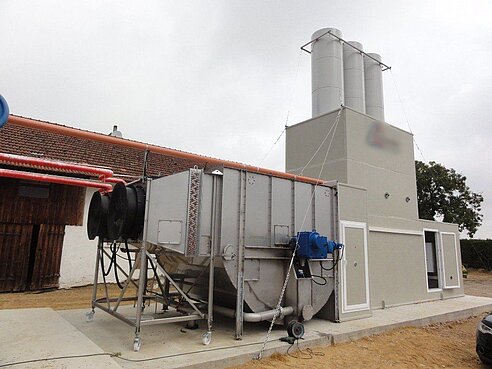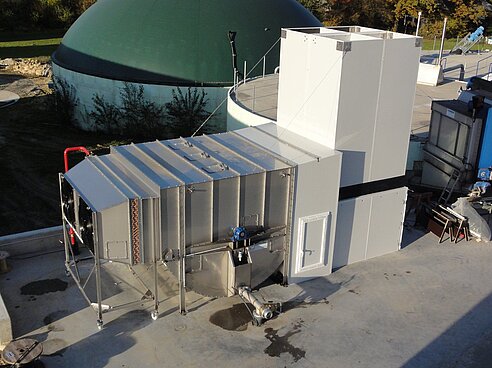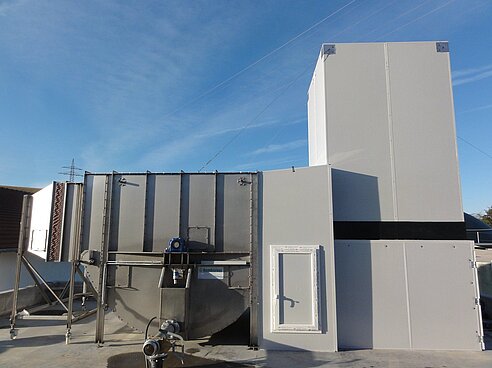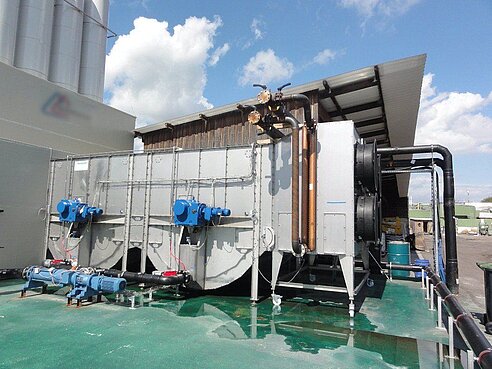Fermentation substrate drying plants
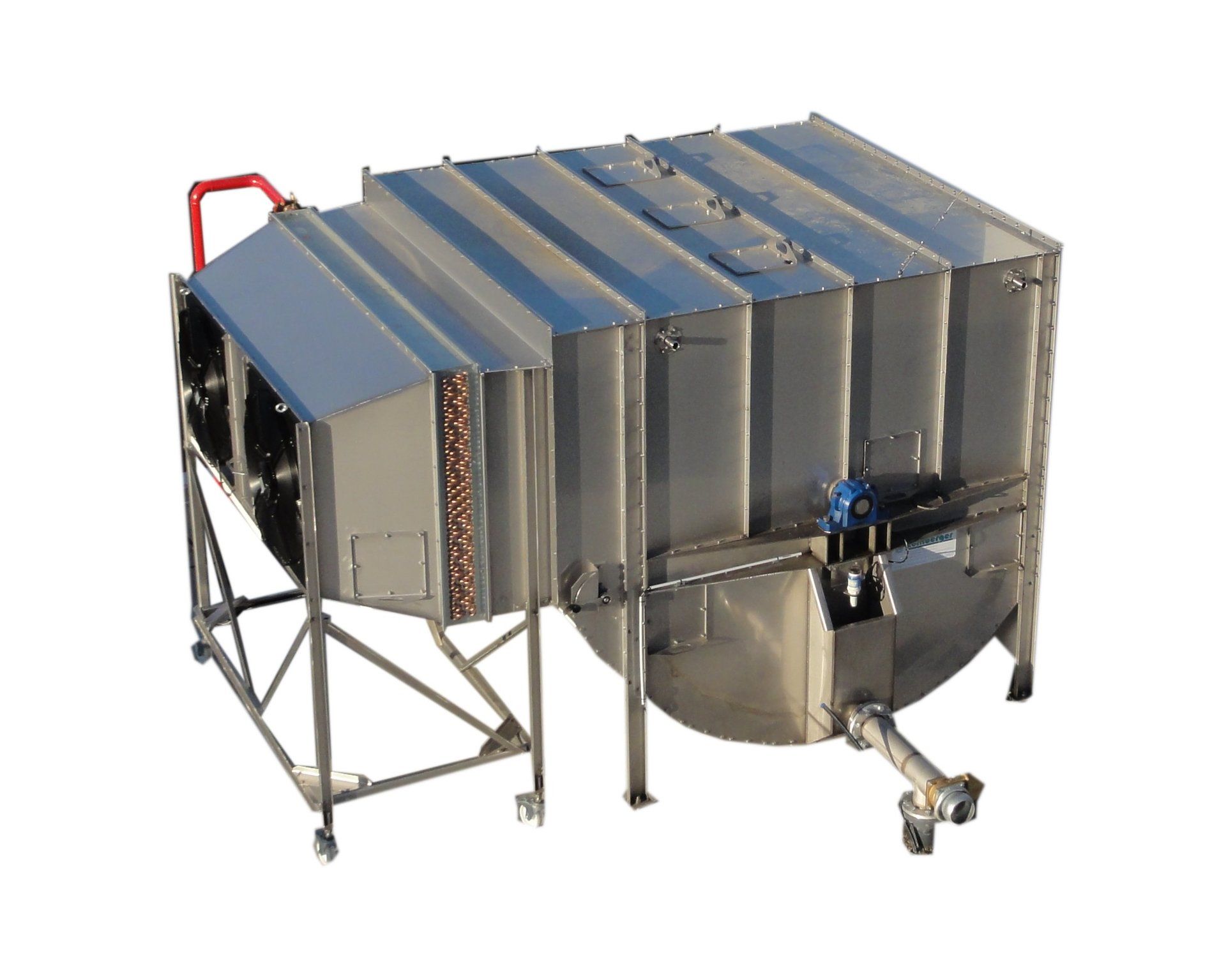
Heat utilization for biogas plants
RST fermentation substrate drying for biogas plants
- The amount of fermentation substrate is reduced by evaporation of liquid (0.7-1Kg/KW/h)
- As a result, savings in storage capacity and transport logistics of up to 50% can be achieved
- This amount is acknowledged at the fermenter volume capacity
- The system is operated automatically with low maintenance and energy expenditure
- We install the plant into your process with automatic filling and emptying
- Thus, a continuous plant operation with full-year utilization is possible
- The production of manure is possible by increasing the dry matter content up to 50%
- Due to the evaporation of the liquid, the dry matter content of the liquid manure increases up to 12%
- The nutrients per cbm increase accordingly
- By means of the fume scrubber, the ammonia is bound with sulfuric acid. This results in a solid ammonium sulfate bond (ASL), i.e. liquid fertilizer
- In the mixture with ASL, the manure then becomes a complete high quality fertilizer
- The plant is operated dust-free
- The fermentation substrate is reduced to a maximum of 12% dry matter content. As a result, there is no dust
- The plant is operated with an exhaust air purification according to TA-Air, so there is no odor imission
- You can use the complete waste heat
- The machine is KWK-bonus able
The performance varies with the available heat. Only time is affected.
For example: at 600kW/h x 0,7L/kW = approximately 420L/h evaporated liquid.
In an 8000h annual operation this corresponds to approximately 3360cbm liquid that does not need to be stored and transported.
More information in our info sheet:
Function:
The Romberger fermentation substrate drying plant increases the solids portion in the fermentation substrate by evaporation of liquid. Continuously heated contact plates in a rotating drum are immersed in the substrate. The moistened sheets are then fed into the air stream. The heated air flows through between the sheets and transports the evaporated liquid. By doubling the nutrient content due to the reduction in quantity, high quality manure is produced. In addition, the quantity reduction saves logistical costs, such as the discharge of manure or storage.
The following points have to be proven for granting the KWK bonus:
- The fermentation products must be prepared for the purpose of fertilizer production
- The aim of the treatment is a weight reduction to improve the transport and storage capacity and a slurry upgrading
- The plant is connected to a heat network of at least 400m in length
- The plant is energy efficient and needs no more than 1500KWh (therm) to evaporate 1000l of water
- The nitrogen must be less than 30%. The nitrogen contents of the products of an exhaust-gas/exhaust-air purification are subtracted from the difference and are therefore not counted as nitrogen loss.
- The Plant must be notified to the competent authority
- The amount of the fermentation substrate must be detected by a flow meter, the energy requirement via the heat meter
- The TA-Luft must be maintained by means of exhaust air purification with an odor statement in ppm / cbm, and perhaps an odor report
- The system must be coordinated with the responsible environmental expert
